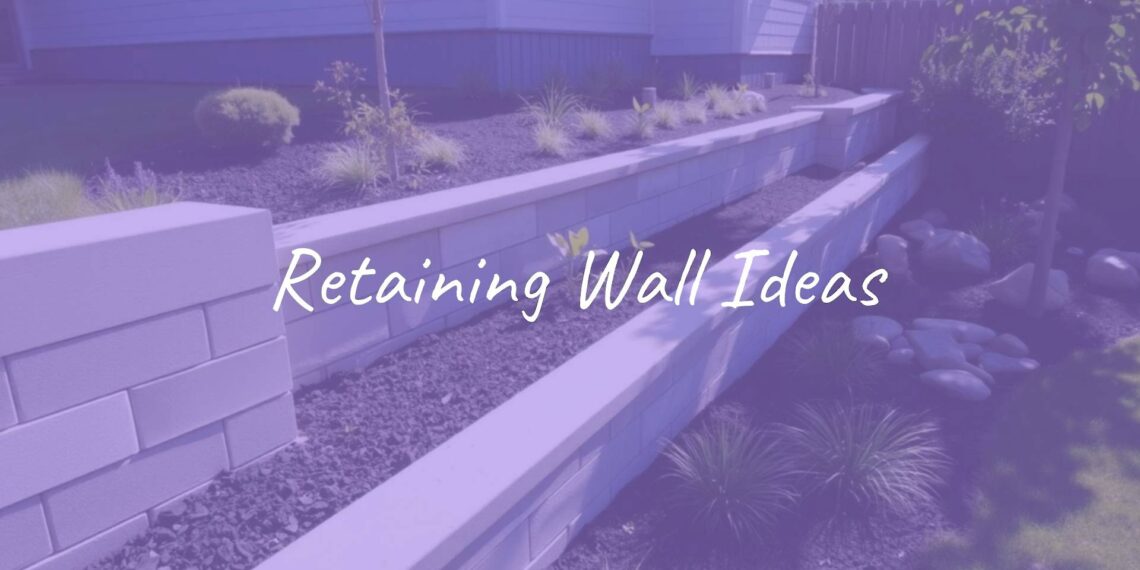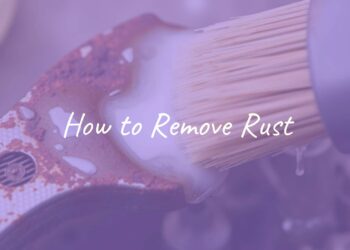Retaining walls do more than hold back soil. They turn tough slopes into usable, good-looking spaces. At the simplest level, a retaining wall holds soil in place and manages water on grades. It helps stop erosion and directs runoff. Beyond that, the right wall can boost curb appeal and create new outdoor areas. If you have a steep hill, want to frame garden beds, or add structure to a yard, the right idea can reshape your space.

What is a retaining wall and why use one?
A retaining wall is a structure that keeps soil and water from sliding down a slope. Without help, gravity and rain move soil downhill. That can cause bare spots, unstable ground, and damage to nearby features or foundations. A retaining wall pushes back against that force and creates flat ground where the land used to drop.
Besides stopping erosion and lowering flood risk, retaining walls help shape a yard. They make sloped areas level enough for patios, gardens, or walkways. They can mark different garden zones or create raised beds. This kind of grading control lets you shape the land for looks and daily use. It can also raise property value, since flat, usable areas tend to be more desirable than steep ground.
Key functions of retaining walls in landscaping
- Support and safety: hold soil in place on slopes and protect nearby structures, paths, and beds.
- Water control: guide runoff and keep water away from foundations; add drains or weep holes when needed.
- Design and layout: create terraces, level pads for outdoor rooms, raised planters, seat walls, and clean edges.
When should a retaining wall be installed?
Add a retaining wall when a change in elevation needs soil support. This is common in yards with slopes, ongoing erosion, or washouts after rain. Signs include uneven ground, soil slipping, or cracks near foundations.
Many people also add walls to improve use and appearance. Want an outdoor kitchen on a slope, a multi-level garden, or a flat patio where a hill sits now? A wall can make that happen. Plan one with decks, pools on sloped lots, or a new entry for better curb appeal. During new builds or big landscape updates, plan the wall early so it fits the overall design.
Popular materials for retaining wall ideas
Your choice of material affects the look, strength, cost, and install method. From rustic to modern, there’s an option for every style and budget.

Natural stone retaining walls
Natural stone is a classic pick with long life and a timeless, organic look. Fieldstone, flagstone, granite, and limestone can read rugged or formal. Dry-stacked stone can last for centuries. Color shifts and natural shapes give each wall its own character. While stone often costs more than wood or basic concrete, its durability and beauty make it a strong long-term choice. Using mixed sizes and large boulders helps the wall blend into the site and can improve drainage.
Timber and wood retaining walls
Wood walls bring warmth and are often more affordable than stone or masonry, usually $10 to $40 per square foot installed. Wood is easy to cut and fit, which suits DIYers. Boards can run horizontal or vertical to reshape slopes and outline beds. Use pressure-treated lumber or composite timbers for longer life; plain wood breaks down over time. Wood walls favor straight runs, but you can stain or paint them to match the house and tie the look together.
Concrete block retaining walls
Concrete blocks are versatile and budget-friendly, often $20 to $35 per square foot installed. Many blocks interlock, so they go up quickly with little or no mortar. They hold soil well and can look modern with clean lines. You can pick from smooth or textured faces and many colors. For a sleek look, poured concrete runs about $20 to $45 per square foot. Stamped finishes can copy wood, slate, brick, or cobblestone for about $25 to $50 per square foot.
Brick retaining walls
Brick offers a traditional look and solid performance at a mid-range cost of $30 to $60 per square foot installed. It is durable and needs little upkeep. Classic red brick pairs well with colonial-style homes, while other colors and patterns can feel more current. Brick’s clean layout lets nearby flowers and plants stand out.
Gabion basket retaining walls
Gabion walls use wire baskets filled with stone, gravel, or recycled concrete. Installed costs often fall between $10 and $40 per square foot. They drain well, are simple to build, and fit curved layouts. They also avoid cracking issues seen in some concrete walls and need little maintenance.
Corten steel and metal retaining walls
Metal walls, including Corten steel, give a crisp, modern feel and run about $35 to $150 per square foot. Corten forms a protective rust layer, so no paint is needed. It offers steel strength with a warm color that blends with plants. Soft curves can feel natural, while straight lines fit a modern look. Short steel walls can add color contrast and pair nicely with farmhouse or industrial styles.
Mixed material retaining wall options
Combining materials can stretch your budget and add visual interest, especially on large slopes with several walls. Pair a concrete core with a stone or brick face, or use gabion baskets with a timber cap. You might mix two stone types, add a matching stone fire pit, and use boulders for a spillway near a patio. Mixing saves money by using less of the pricier materials while keeping the look you want.
Low-cost retaining wall ideas
You can build an effective wall without spending a lot. Smart material choices and DIY-friendly methods help keep costs down.
Using recycled materials and boulders
Reusing what you have is budget-friendly and green. If you uncover boulders during digging, use them in your wall. That cuts material costs and keeps the site’s natural look. Old concrete slabs or demolition debris can be stacked for a rugged, low-impact wall. Pair with plants to soften the look and add color.
Concrete bag retaining walls as a budget solution
A simple DIY method uses dry concrete mix in bags stacked like blocks. After stacking, soak the wall with water so the mix hardens inside the bags. Once cured, remove the bags or let them break down, leaving solid, bag-shaped blocks. It won’t look like cut stone, but it is cheap, sturdy, and easy to source.
Gabion retaining walls for affordability
Gabion systems are often among the least expensive walls, at about $10 to $40 per square foot installed. The wire baskets fill with local rock or recycled concrete, which keeps costs low. They drain well, work on curves, need little upkeep, and offer a rustic or industrial style many people like.
Creative retaining wall ideas for different landscapes
Retaining walls can solve grade problems and also add style. From steep slopes to small garden edges, there are many ways to use them.
Retaining wall ideas for sloped backyards
Sloped yards are perfect for terracing. Several short walls are often better than one tall wall. This spreads the load, simplifies engineering, and adds planting space. Fill tiers with shrubs, flowers, or herbs to turn a hard slope into a useful and attractive area.
Multi-tiered retaining walls for level changes
Multiple small walls step up or down a hill, creating flat areas at each level. This setup improves stability and adds layers for different plantings. It works with the land’s shape, often cutting down on heavy digging and fill. The final result looks natural and adds interest.

Curved and terraced retaining wall designs
Curved walls follow the land and can feel softer than straight lines. They guide the eye and can make paths and beds flow together. Terraces-curved or straight-handle big height changes while adding depth. Try board-formed concrete walls with tall grasses between levels to soften edges and blend tiers.
Short retaining walls for gardens and paths
Low walls under three feet are flexible and affordable. They frame beds, make raised planters, add informal seating, and edge driveways or paths. Raised beds help with weeds, compaction, and drainage. Short walls around trees can protect roots and set a focal point with flowers at the base.
Driveway and entryway retaining wall ideas
At driveways and entries, walls protect against erosion and boost curb appeal. On sloped driveways, walls help keep soil and debris off the pavement. Materials like poured concrete, stone, or interlocking blocks give a clean, durable border. Add lighting for safety and style. Tiered brick walls near an entry can add shape and guide visitors to the front door.
Landscaping with retaining walls for flower beds and planters
Raised beds built with stone, timber, or cinder blocks make planting easier. They improve drainage, reduce weeds, and let you control soil quality. You can also integrate planters into the wall to soften hardscape and create a welcoming entry or courtyard.
Building retaining walls around trees and focal points
Wrap a low wall around a favorite tree to protect roots and add a ring of color with flowers. Use small walls to frame water features, plant groupings, or specimen trees. This directs the eye and gives structure to the yard.
Retaining walls with fire pits, seating, and water features
Combine features with your wall to get more from your space. Build a fire pit area with heatproof blocks and match or contrast the wall color. Turn a tall wall into built-in seating with a wide cap. Add a fountain with water spilling into a basin to bring sound and movement to the area.

Style and finish options for retaining walls
After the structure is set, finishes bring the look together. Color, texture, caps, and lighting make a big difference.
Selecting colors and surface textures
Finish choices strongly affect the style. Concrete can be board-formed for wood grain, scored, seeded with stone, painted, or stenciled. Gray concrete can echo vertical siding for a cohesive look. Block walls can blend in or add a color accent that matches your porch or patio. Natural stone brings built-in color and texture-from earthy fieldstone to crisp cut stone. A light stucco coat can soften block joints, while a full three-coat stucco gives a smooth, uniform face.
Adding stone caps or coping for a finished look
Stone caps protect the top of the wall and give a clean edge. At about 18 to 20 inches high, a smooth cap doubles as a seat. For a relaxed style, use the same fieldstone on top as on the face. Add end posts with caps to frame the ends along walks or steps.
Painting and staining timber retaining walls
Paint can make a wood wall feel like part of the house. Matching the exterior color helps tie the yard to the home. Prefer natural wood? Use a semi-transparent stain to bring out grain and color while adding protection, especially on pressure-treated boards.
Incorporating lighting for safety and ambiance
Lighting adds safety and mood. It helps people see steps and paths and brings a warm glow at night. It’s easier to add lights during the build so wiring can go inside the wall. Aim lights to highlight texture, plants, or seating for evening use.
Blending retaining walls with greenery and plantings
Plants soften hard edges and help walls fit the site. Let groundcovers spill over rock faces. Tuck small plants like moss phlox, creeping thyme, or rock cress into gaps. Use deep-rooted groundcovers to help control erosion. Add native grasses and small trees for privacy, and mix perennials for color. If a wall looks plain, add a trellis and grow vines or even edible plants.
Designing modern and minimalist retaining walls
For a clean, modern look, use simple forms and crisp materials. Board-formed concrete suits midcentury styles. Corten steel gives a warm rust finish with sharp edges. An all-black wall can disappear behind plants while still looking striking. Large concrete planters in a row can read like a sculptural wall. Careful material choices and clean lines help the wall relate to the house and site.
Practical considerations for your retaining wall project
Before you pick finishes, handle the basics. These steps make the wall safe, long-lasting, and code-compliant.
Drainage and stability
Good drainage and a stable base are very important. Walls take sideways pressure from soil and water. Without drains, water builds up and can push a wall over. Gabions and dry-stacked stone drain well on their own. For other walls, add gravel backfill, perforated drain pipe, and weep holes where needed. Soil type, rainfall, and wall height guide the drain plan. Build on a solid footing sized for the load and use proper reinforcement for long-term strength.
Factors affecting retaining wall height and structure
Height, soil pressure, and site conditions set the design. Tall walls (over about three feet) need more engineering, footings below frost depth in cold zones, reinforcement, and better drainage. Clay soil can push harder than sandy soil. Slope angle, runoff patterns, and even local seismic activity can also affect the build. Scale the wall to nearby plants and structures so it looks balanced and fits the space.
DIY or hire a pro?
DIY works for small, low walls with simple layouts, like timber or interlocking blocks. Many stores sell blocks and kits with guides. For tall walls, heavy loads, tight curves, or complex designs, hire a pro. Contractors bring engineering skill, drainage know-how, and code knowledge. This helps avoid failures and injuries and often leads to a stronger result. Get at least three bids, be clear about scope and materials, and ask about warranties.
Cost comparisons by retaining wall material
Installed costs vary by material, height, site access, and design. Most walls run $20 to $50 per square foot, with premium designs up to $150. Typical installed price ranges:
| Material | Installed cost per sq ft |
|---|---|
| Wood (timber) | $10 – $40 |
| Gabion | $10 – $40 |
| Rammed Earth | $20 – $30 |
| Railroad Tie | $20 – $30 |
| Cinder Block (CMU) | $20 – $35 |
| Concrete (modular interlocking blocks) | $15 – $35 |
| Concrete (poured) | $20 – $45 |
| Concrete (stamped) | $25 – $50 |
| Boulder Rock | $25 – $50 |
| Brick | $30 – $60 |
| Stone Veneer | $30 – $80 |
| Natural Stone | $10 – $85 |
| Steel or Metal | $35 – $150 |
These are averages. Prices change with local labor rates, access, wall height, and the stone or finish you pick. Natural rock can cost more due to hauling and install time.
Permitting, building codes, and regulations
Before you start, check city or county rules. Many places require permits for walls over a set height (often 3-4 feet). HOAs may also limit materials, colors, or heights. Skipping permits can lead to fines or removal. Call your planning office and HOA early to confirm requirements and avoid delays.
Frequently asked questions about retaining wall ideas
Planning a retaining wall often brings up questions. Here are common questions and answers to help you move forward.
What is the best type of retaining wall for my yard?
It depends on slope, budget, style, and soil. For big loads, reinforced concrete or natural stone are strong choices. For smaller DIY projects, timber or interlocking blocks work well. For a modern, industrial look, choose Corten steel. For low cost and great drainage, try gabions. Match the material to your home’s style-brick for traditional, stone for craftsman, and so on. Aim for a balance of function, lifespan, looks, and cost.
How long do different retaining wall materials last?
Life span varies by material and build quality. Natural stone can last for centuries. Concrete (poured or block) often lasts 50-100 years or more with proper design and install. Brick also holds up for decades. Timber walls usually last 10-20 years; pressure-treated wood and preservatives help. Composite timbers last longer than natural wood. Corten steel resists corrosion and lasts many years. Gabions are durable thanks to stone fill and galvanized wire. Good drainage and construction extend the life of any wall.
Can I build a retaining wall myself?
Yes, for small, low walls (under about 3 feet) with simple shapes. Timber, interlocking blocks, and gabions are DIY-friendly. Many stores sell blocks and kits made for homeowners. For tall walls, heavy loads, or complex curves, hire a professional. These builds need engineering, drainage design, and sometimes heavy equipment. Always check codes and permits before you start.
What maintenance is required for retaining walls?
Most stone and concrete walls need little upkeep beyond cleaning dirt, moss, or mildew. Wood walls need checks for rot or insects and may need new stain or sealant over time. Keep drains, weep holes, and gravel backfill paths clear so water doesn’t build up behind the wall. Look for cracks, bulges, or movement and call a pro if you see problems. If your wall has plants, keep up with pruning and weeding. Fix small issues early to avoid bigger repairs later.
















![What to with Scrap Metal? [infographic]?](https://facts-homes.com/wp-content/uploads/2019/07/645413-POPYOV-391-120x86.jpg)





